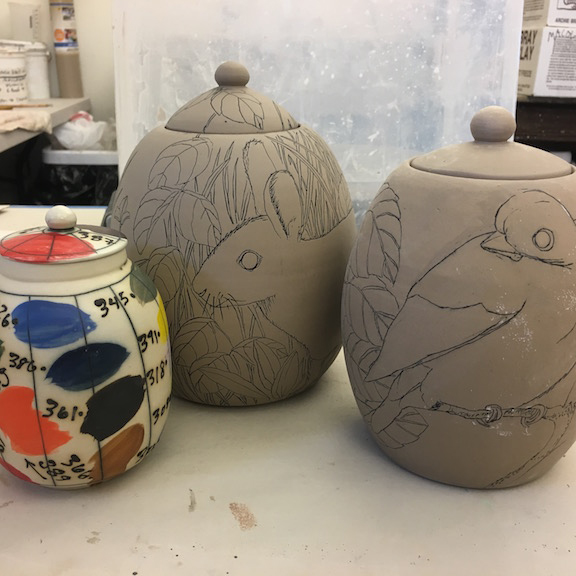
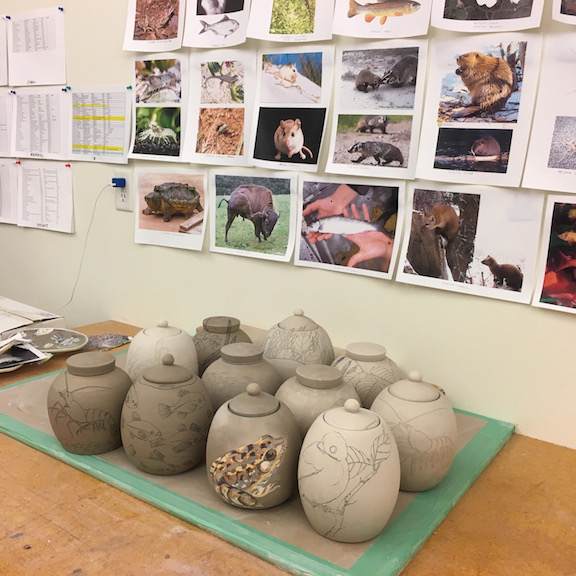

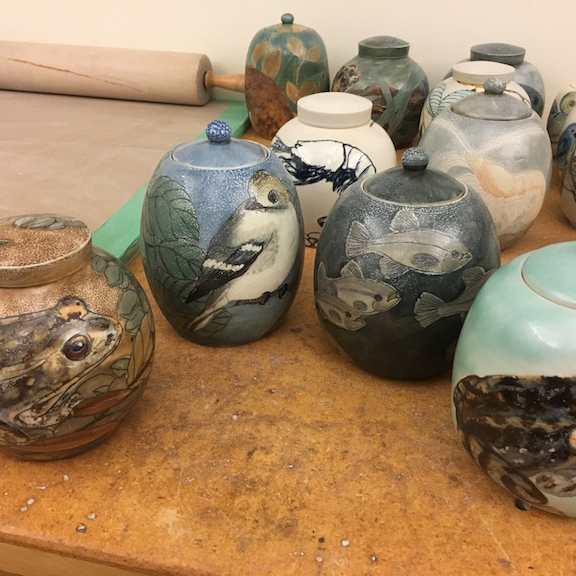
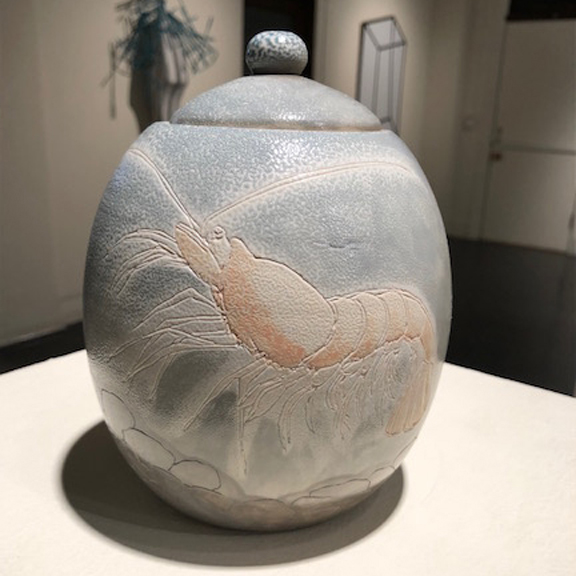
The success of this jar was from the interaction of the salt / soda atmosphere in the kiln on the underglaze surface, not the beauty of the shrimp. The underglaze was applied to the jar when it was a stiff leather hard and the subtly of the colors washed out, losing the delicate transition from white to pink across the crustrations shell. In addition, I want the pottery itself to be beautiful; strong in form and how it meets the lid and the table – a potter’s pot. The knobs gotta go!
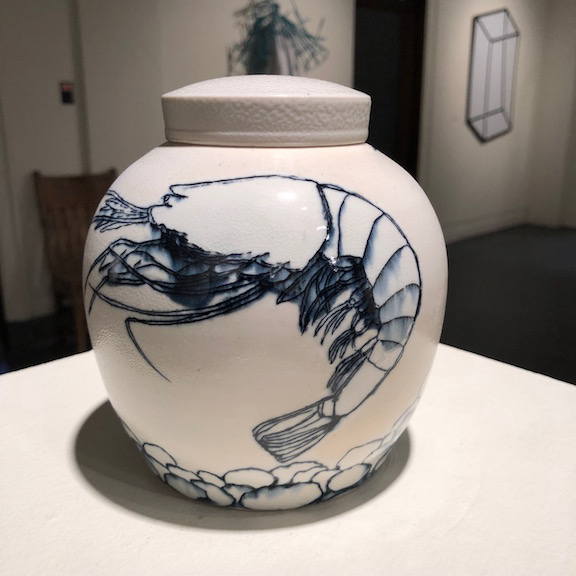
The success of this jar was the phenomena of the inlay slip drawing slightly melting and moving with the glaze on top. This historical technique produces beautiful surfaces, however does not support the content of the project. I notice the rich glaze surface of the materials before the beauty of the crustration. In contradiction, the form of the jar is rooted in Asian ceramics and, to me, is far more satisfying visually and no longer resembles a cookie jar.
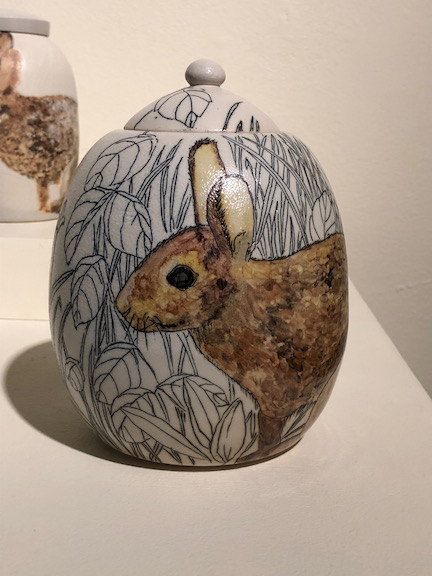
The use of both underglaze and china paint on the rabbit is starting to get a little closer to the fur. However, my lack of skills is really showing in this little rabbit! The environment (leaves, sticks) are done using slip inlay technique and are a lovely decoration, but calls to much attention to itself – as decoration it is over bearing and not related to the form. I need a background surface that is not distracting and gives the species context of environment and scale.
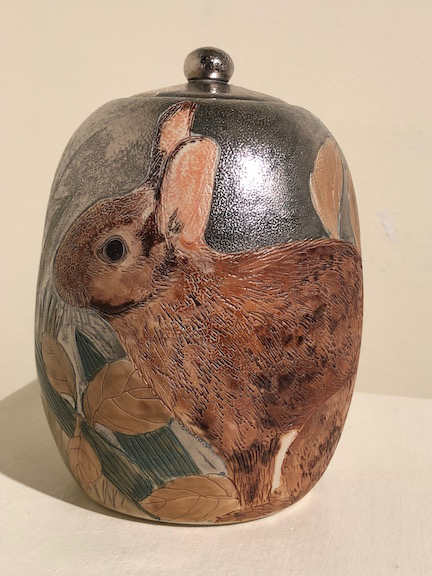
On this jar I carved the composition into the surface of the porcelain, but did not inlay slip. This is more sensitive to using underglaze and flexibility in color. I lustered the piece around the drawing to flatten the back ground out – to ‘pop’ out the content. Though this is an improvement, visually it is very demanding surface and would not work visually in a large group of urns.
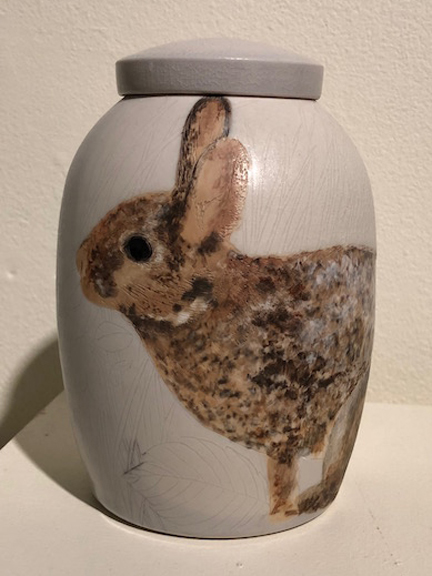
The porcelain jar is carved with the composition. I glazed around the rabbit with clear than pooled slightly in the carving. With some success, the cottontail itself is painted with underglaze and then fired to cone 5 in a salt / soda kiln and then layered with china paint. However, the composition on the surface does not relate the form of the urn. In addition, the form of the jar is pretty lifeless and has lost the sense of being hand made.
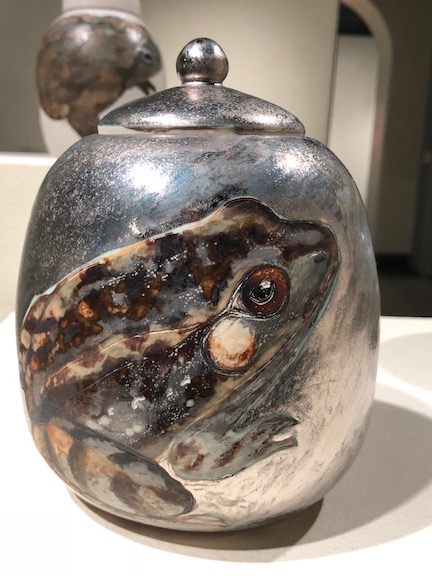
The combination of craving and underglaze is starting to develop a clear image of a specific toad. I floated the image in platinum luster to highlight the toad, however this has the opposite effect and the surface competes with the image. In addition, having no clear location around the toad, there is a loss of scale and environment creating an alienating atmosphere.
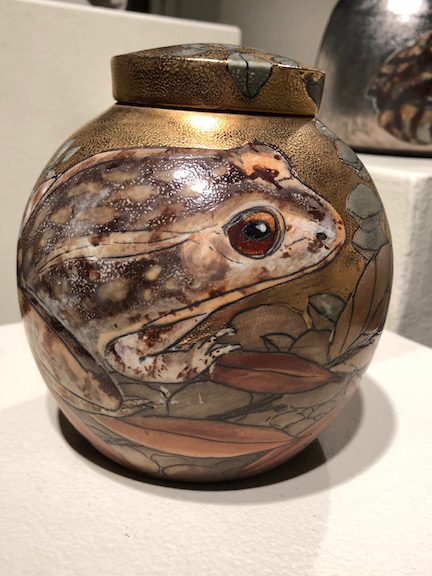
On this jar, the black inlay lines defining the animal and environment around it. This is adding some structure to the composition, though it does remind me of coloring book drawings, waiting to paint by numbers. I am ambivalent to the nature of salt / soda firing chance effect on this glaze surface for this specific project. The gold luster on top of the atmospheric ‘orange peel’ salt / soda surface is beautiful but with no glaze melt, the surface is less interesting.
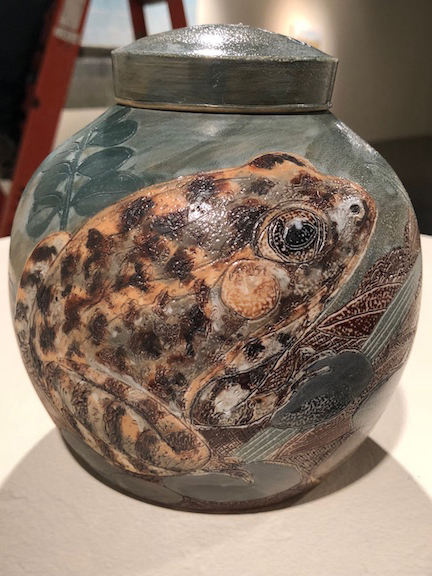
The imagery is carved in with underglaze color applied after the jar is bisque. The general ‘brushy-ness” of the underglaze is distracting though the salt / soda firing helps the atmosphere of the surface. The leaves look flat and lessen the depth starting to develop in the toad. In addition, the form has a weak shoulder, and the frog seems to be pointing right at this, since the image has no other relationship with the form itself.
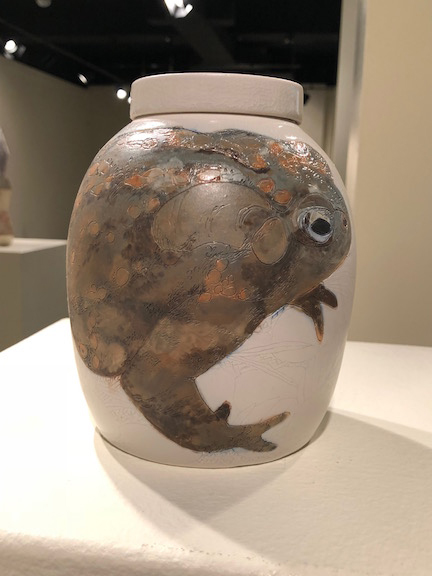
I think this is one of the more successful jars. I like how the toad is wrapping itself around the jar – the form making the toad look bigger, and the toad making the jar look bigger. In addition, you can see the toad clearly, and still need to move around the piece a little to best understand it. The underglaze of the surface is as subtle as the toad actually is and the carving and the underglazes are not in conflict. The form of the jar itself has a to narrow shoulder, and lid a little big, it does not sit on the table with grace and is lacking the soft look of some thrown pots.
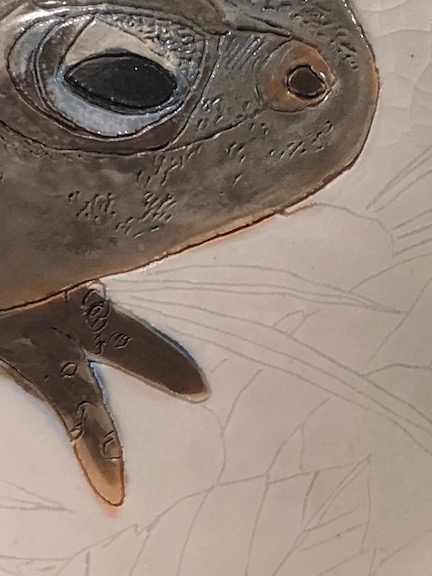
In this detail of study number 8, the clear glaze is pooling in the carving on the surface. The toad itself isolated on the jar, the viewer is not distracted by the back ground. The toad is still in an environment but not alien. However, this clear glaze need to be beauteous! I need the beautiful viscosity of melt, the subtle glaze move so it pools in the carving, creating depth and atmosphere to show of the great beauty of feldspathic melt on porcelain next to the flat painterly qualities of underglaze and rendering.